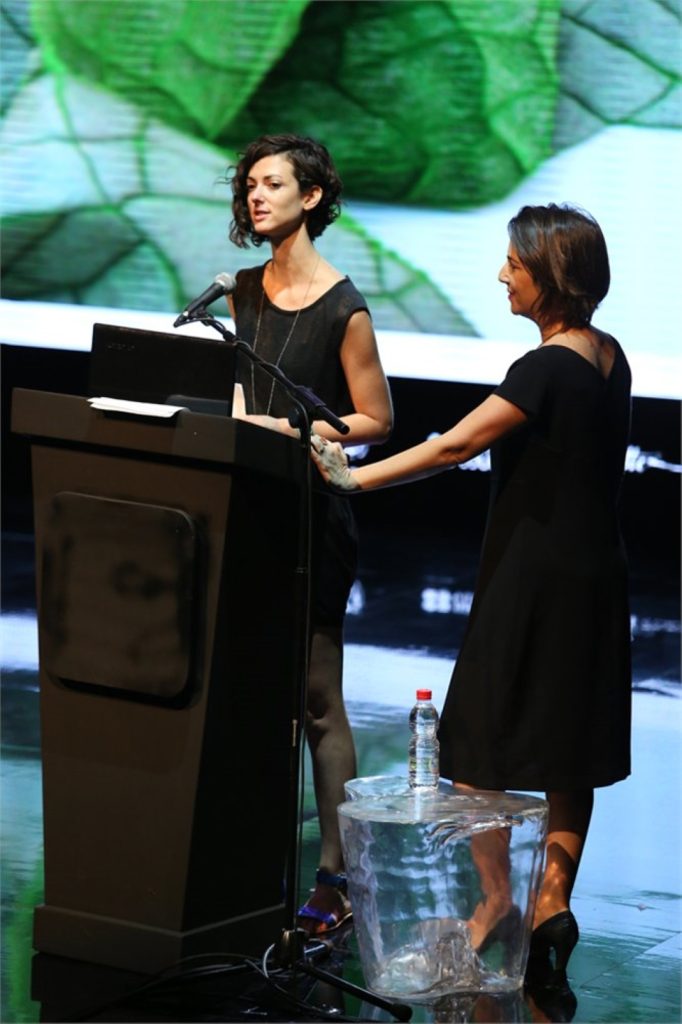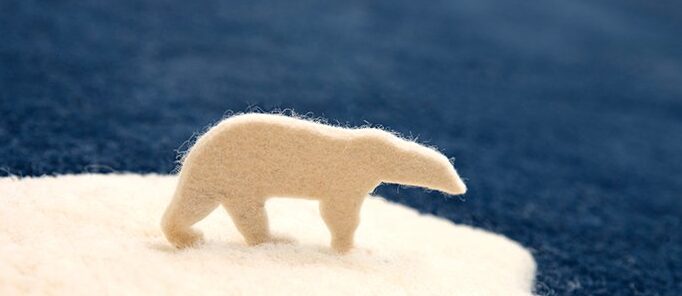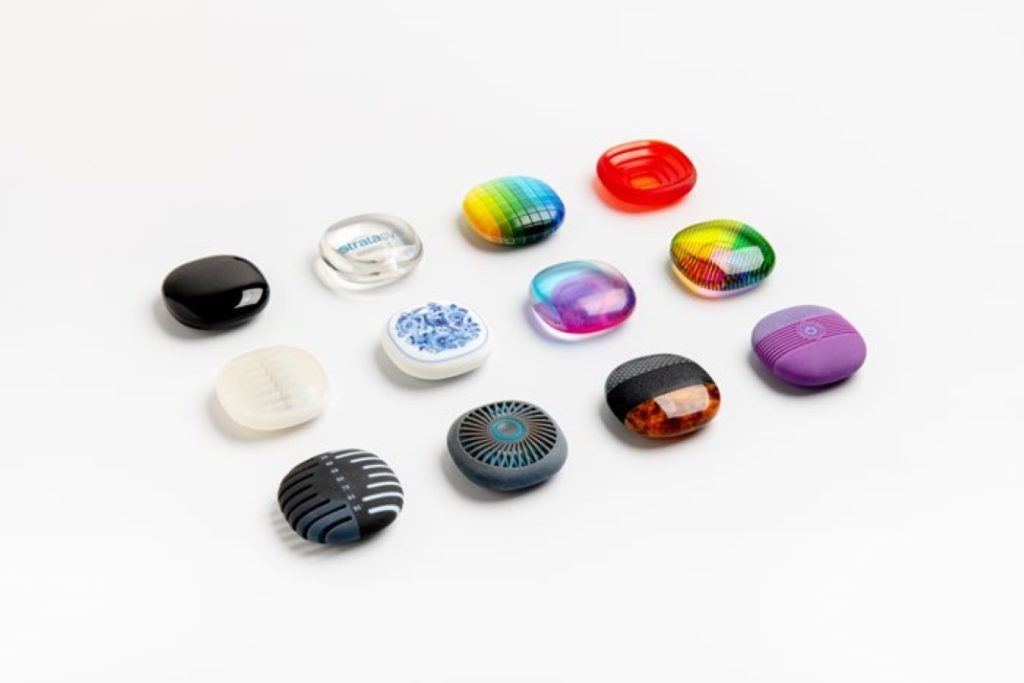Chantel Braley, an intern in the Materials Library, rethinks fashion after visiting HOF13 conference
Surrounded by a sea of the most fabulously dressed people I have ever seen, with waves of monochrome, splashes of color, and unique styles as varied and gritty as grains of sand, the second day of Holon Fashion Week took my imagination by storm, provided a depth of innovative information, and left me swept away by creative inspiration. Less than a month into my internship with the Design Museum’s Materials Library, this year’s Holon Fashion Week theme, “Materials of Fashion,” was both highly pertinent to my new vocation, as well as selfishly indulgent in terms of my personal passion for fashion. Although my main concern going into Fashion Week was what to wear each day, by the end of Tuesday’s conference, I not only had a fresh appreciation for the future of fashion, but more importantly, I walked away with a completely new outlook on how my fashion choices impact the planet.
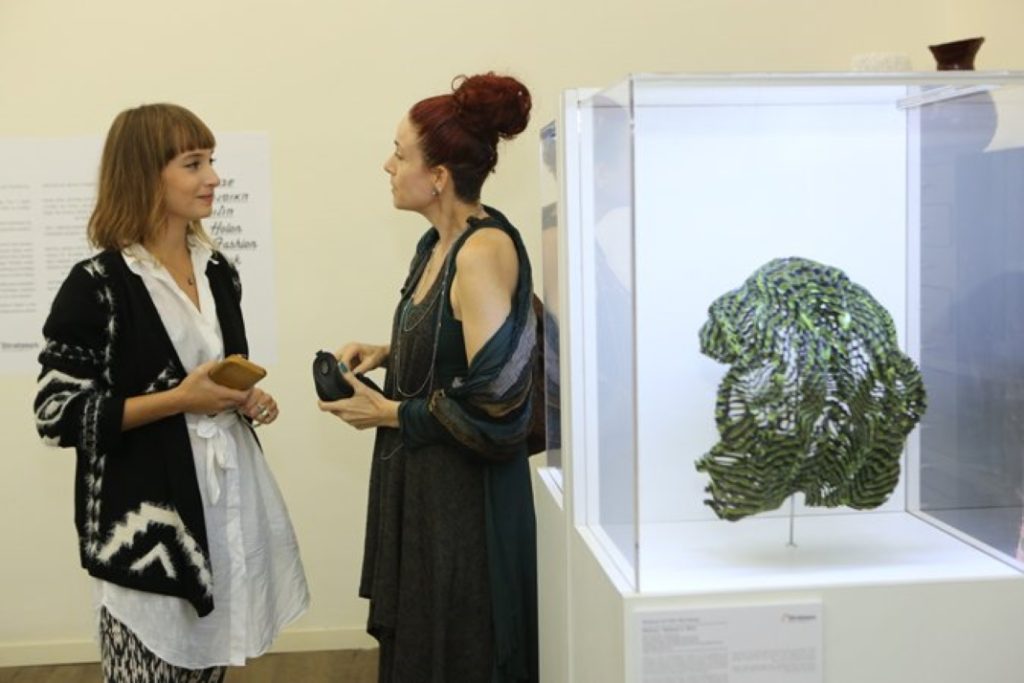
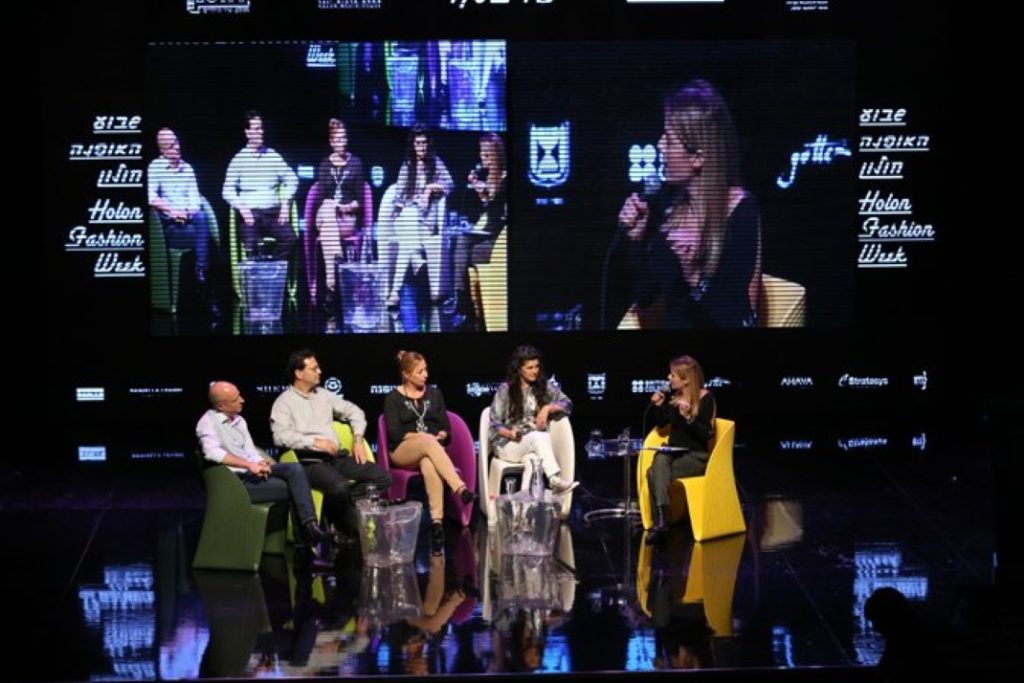
As We Dress Better, Our Planet Gets Uglier
Prevalent within each of the conference presentations and panel discussions throughout the day, there was an overarching emphasis on the materials, techniques, and technologies that will dictate the future of fashion, design, and production within in Israel as well as the world stage, i.e. what we can expect to see in studios, factories, stores, and on the runway five, ten, twenty years down the line. While many of the presentations revealed fascinatingly innovative technologies, such as 3D printing, bio-manufacturing, and the incorporation of led-lights into garments, what surprised me most about the conference’s fashion-forward discourse was the seemingly unfashionable, yet extremely refreshing, conscientious attention to the environmental impact and sustainability of both the local and global fashion and textile industries; as we look forward toward the glamorous and exciting future of fashion, it is comforting to know that many designers, as well as their consumer markets, are equally aware of the less-glamorous repercussions associated with the fact that our planet will become more and more ugly as we continue to mindlessly dress fabulously.
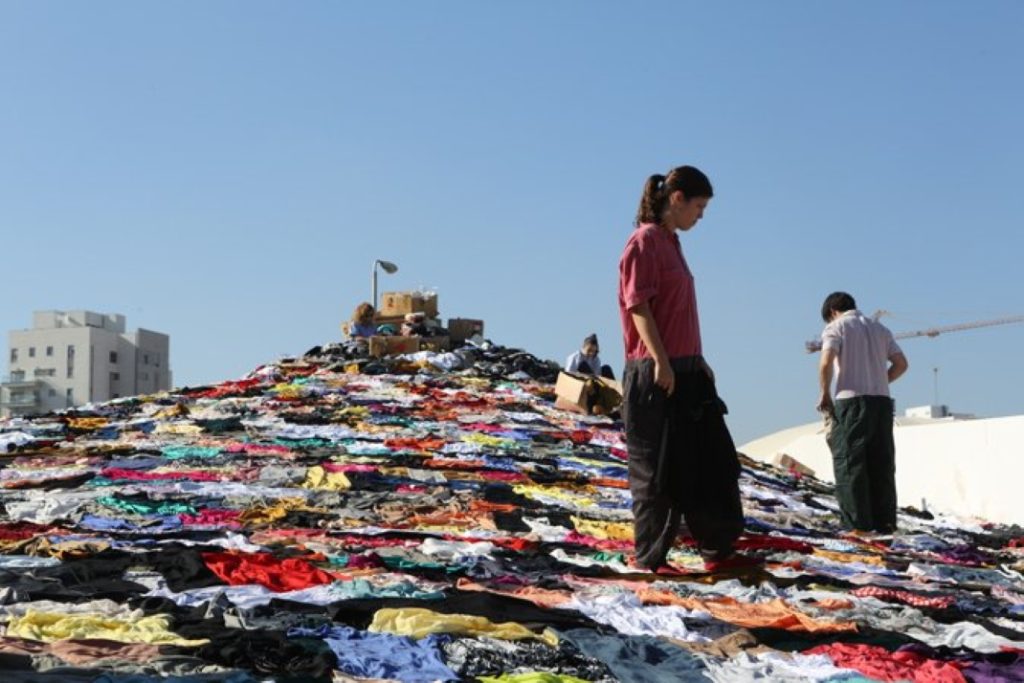
Mother Nature as Inspiration
In addition to the philosophical focus of both the fashion and textile industries’ environmental impact on the planet, ironically, many of the designs, materials, and technologies discussed throughout the day did not reflect stereotypically associated aesthetics of futuristic fantasy, such as outer space metallic moon-suits, or science fiction-esc designs, but rather, most drew their inspiration from terrestrial elements provided by the greatest artist of all: Mother Nature; think Earth Mother, not Blade Runner. Echoing and celebrating the endangered elements that the future threaten to destroy, a vast majority of the collections, technologies, and materials highlighted at the conference clearly reflected the varied textures, colors, patterns, and processes of the natural world. For example, the first presentation given by Daniel Dikovsky, Digital Materials Team Leader, with the 3D company Stratasys, showcased the utilization of innovative technological advances in 3D printing for the fashion sector. As evident in the black and nude “tree root” couture shoes, collaboratively designed by Iris van Harpen and Rem D Koolhaus, who worked with Stratays on their 2013 couture collection, while 3D printing undoubtedly utilizes innovative technologies to create cutting-edge products with modern materials, when it comes to inspiration, futuristic fashion is still rooted in the shapes and lines of the natural world; go see these shoes for yourself on display in the Materials Library, located on the second floor.
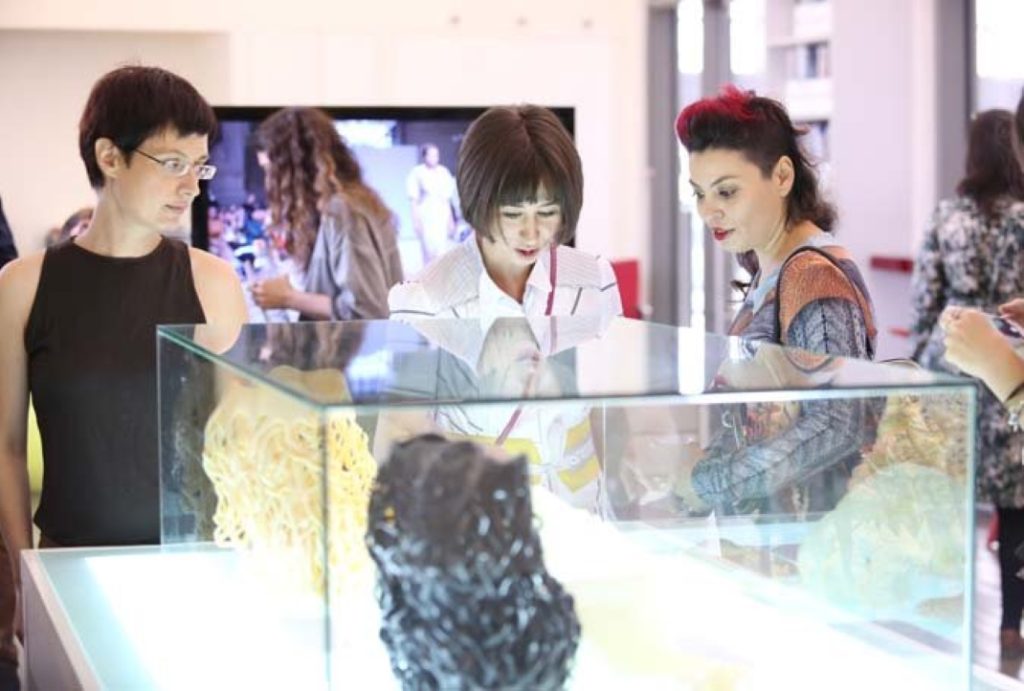
Similarly, various designers credited nature as their inspiration for their textiles and designs; one designer even coupled her presentation with nature photography to visually express how her inspiration was drawn from the colors and compositions of each distinct season, such as the textures and warm tones created by fall leaves, to the cool colors and slick lines of icy winters. Master milliner Stephen Jones articulated it best when he said: “I often take my inspiration from nature. Just look at a sunset, or a leaf. But it is difficult to improve upon the original, isn’t it?”
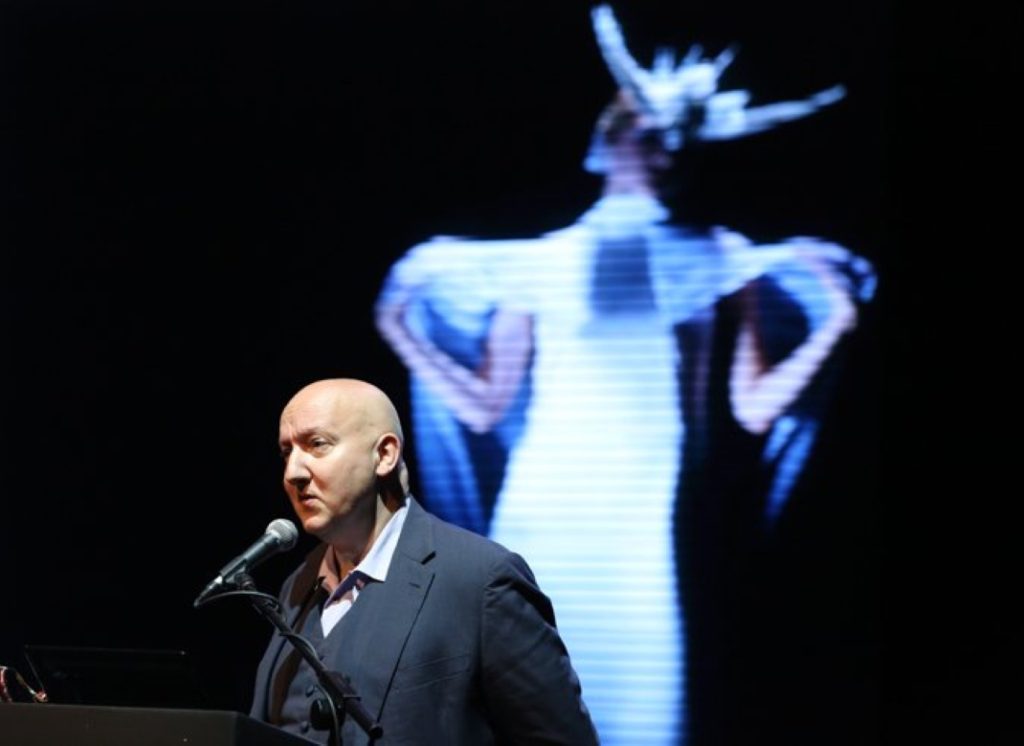
Grow a Dress (BioCouture)
Conversely, one of the most interesting, groundbreaking, and memorable presentations, an endeavor that can be described as nothing short of mind-blowing, was given by London-based fashion designer Suzanne Lee on her eco-sustainability research company BioCouture. Looking far down the proverbial road to imagine what may emerge in fashion’s future, BioCouture’s research surpasses normative concerns for sustainability to take the utilization of nature in fashion to a completely new and previously unimagined level. Rocketing light-years beyond the use of nature as mere design inspiration, Suzanne Lee’s innovative research with BioCouture showcased a science-fiction-like vision that utilizes bacteria to posture Mother Nature as the materials manufacturer, designer, and seamstress.
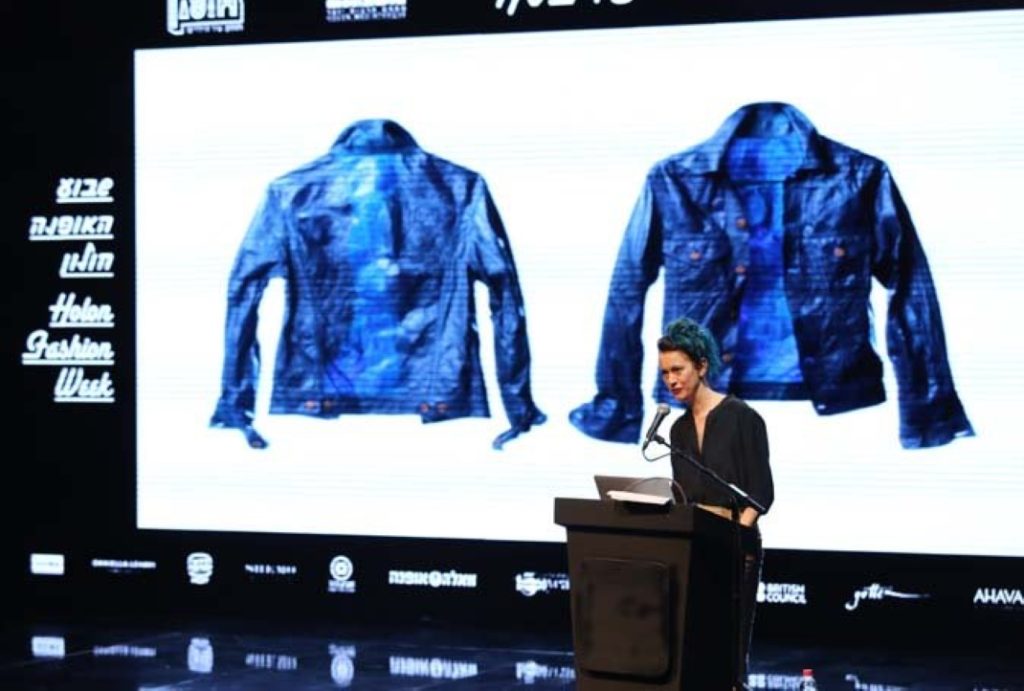
Using bathtubs of a sweet green-tea Kombucha solution with live cultures, Suzanne Lee lets microbial-cellulous do the textile work for her by allowing the millions of tiny bacteria to form a translucent material. Once the material literally materializes, it can then be manipulated around a form to dry into solid shapes, such as functional clothing patterns, that are able to bind together without sewing; in other words, without textiles or stitching, she was able to, “Grow a dress in a vat of liquid.” During her presentation, Suzanne Lee displayed the versatility of the bacteria-grown material, showing photos of wearable garments like a dyed “denim” jacket. While this process may seem all too futuristic and fictional, it ironically took a return to nature and traditional techniques to make the bacteria-grown clothing viable against water, mold, and breakage; by adapting an ancient technique of Japanese kimono waterproofing called kakishibu, an art which harnesses the natural properties of the persimmon fruit, Suzanne Lee was able to apply a natural, non-toxic coating capable of protecting her sci-fi grown garments from moisture and mold, while also bolstering the articles structural integrity.
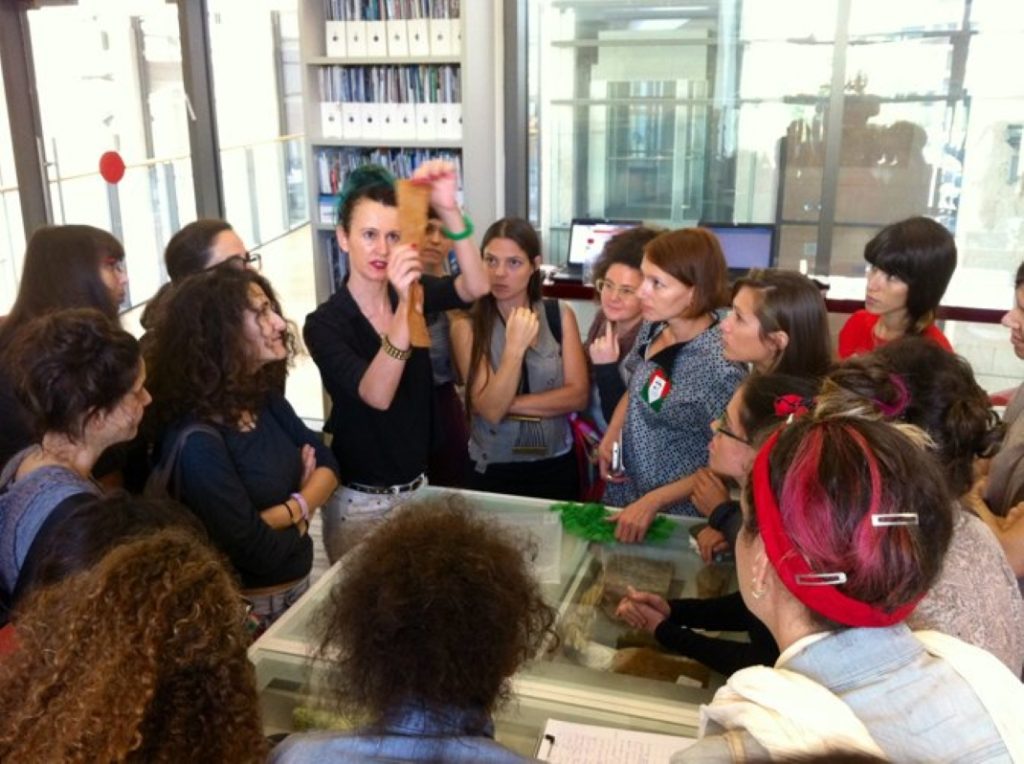
Sustainability & Responsibility (H&M)
While it is rather difficult to get any more sustainable and surprising than a green tea grown and self-sewn dress, the keynote that I found most shocking and informative was the presentation given by the beautiful and fashionable Catarina Midby, head of fashion and sustainability, at the wildly successful Swedish brand H&M. It was beyond refreshing and inspirational to hear that a worldwide, far-reaching, powerhouse company like H&M is genuine in its multifaceted commitment to environmental consciousness and minimal ecological impact. Due in large part to its geographical origins, H&M is imbued with the traditional Swedish value that the earth belongs to all of us, and thus we all must work toward protecting it. I was extremely moved by Catarina Midby and H&M’s authentic dedication and tangible efforts to infuse personal and corporate eco-responsibility into all facets of their business. Not only did H&M conduct in-depth studies on the environmental impact of various materials throughout their full lifecycle, from textile production, to store shelves, to customers’ closets, and then the landfills, but they also adjusted their materials and practices accordingly. This data was used to create more environmentally friendly, and arguably revolutionary, “conscious” organic collections such as organic cotton, organic silk, organic hemp, organic linen, and organic leather lines. H&M’s eco-friendly initiatives even went so far as to educate their farmers on the environmental impact of their chemical and water usage, as well as educating their customers on reducing their environmental impact through their “green conscious tags.”
Fashionable Warrior for Mother Nature (Personal Reflections)
Holon Fashion Week’s conference drastically changed my perspective of fashion’s future from what to wear, to what will the impact be on how our planet looks down the road. By implementing simple solutions like washing clothes less often, air-drying instead of using machines, using a shower to steam instead of ironing, and being more conscious of where my clothes go after I am finished wearing them, I hope to contribute to the goal of sustainability through personal responsibility. Imbued with a fresh perspective and a wealth of new knowledge, Holon Fashion Week taught me that the future of fashion isn’t on a space station in some far off galaxy, but rather it can be found in the plethora of natural art that surrounds me. The blade of grass, the seashell, and the roots of a tree are all inspirational living canvases that simultaneously need our protection, as well as inspiring the materials and technologies driving the future of fashion forward; most importantly, I will never drink green tea Kombucha again without hoping that Mother Nature will reward my preservation efforts with a spontaneous gift of bacteria grown and sewn couture clothing.
